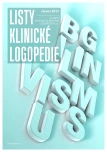Selected myths in relation to bilingualism
Published in:
Listy klinické logopedie 2017; 1(1): 39-42
Category:
Not only for speech therapists
Overview
We meet with bilingual education increasingly to a greater extent. Under the influence of enlarging experience during the years, the approaches to bilingual child education are slowly changing. The speech therapist is the person who can help parents to find appropriate method to support in pozitive way both languagues development in their child. The text below is not a comprehensive analysis of the issue, it presents selected questions only, with the effort of current responses. This text is for everyone who participate to bilingual children education, last but not least is for teachers and parents of these children.
Keywords
Bilingualism, Bilingual Education, Language Developmental Impairment, Lexicon, Specific Learning Disabilities
Sources
-
AMERICAN SPEECH – LANGUAGE – HEARING ASSOCIATION (ASHA). (2017) Bilingual Service Delivery [online]. [cit. 03/2017] Dostupné z: www.asha.org
-
ARIAS, Graciela; FRIBERG, Jennifer. (2017). Bilingual Language Assessment: Contemporary Versus Recommended Practice in American Schools. Language, Speech and Hearing Services in Schools. 48: 1-15.
-
BERENS, S. Melody; KOVELMAN, Ioulia; PETTITO, Laura-Ann. (2013). Should bilingual children learn reading in two languagues at the same time or in sequence? Biling Res Journal. 36(1): 35-60.
-
BYERS-HEINLEIN, Krista; LEW-WILLIAMS, Casey. Bilingualism in the early years: What the science says. LEARNing Landscapes, 2013, 7.1: 95-111.
-
COSTA, Albert; SEBASTIÁN-GALLÉS, Núria. (2014). How does the bilingual experience sculpt the brain? Nat. Rev. Neuroscience. 15(5): 336-345.
-
CRIVELLO, Cristina; KUZYK, Olivia et al. (2016). The effects of bilingual growth on toddlers‘ executive function. J Exp. Child Psychology. 141: 121-132.
-
DEEPTHI, M.; NATARAJA, N.P. (2016). Lexical Access in Monolingual, Bilingual and Multilingual Children: A Comparative Study. Language in India. 16:9.
-
GROSJEAN, François. Bilingual: life and reality. Cambridge, Mass.: Harvard University Press, 2010. ISBN 978-0-674-04887-4.
-
HAUGEN, Einar (1975). Stigmata bilingvismu. Slovo a slovesnost. 36(1): 8-17.
-
HOFF, Erica; CORE, Cynthia. (2015).What Clinicians Need to Know about Bilingual Development. Semin Speech Lang. 36 (2): 89-99.
-
KENNER, Charmian. (2017). Bilingualism: Frequently Asked Questions [online]. [cit. 03/2017] Dostupné z: www.literacytrust.org.uk
-
PEARSON, Barbara Zurer. Raising a bilingual child: a step-by-step guide for parents. New York: Living Language, c2008. ISBN 978-1-4000-2334-9.
-
ŠTEFÁNIK, Jozef. (2000). Jeden človek, dva jazyky. Bratislava: Academic Electronic Press.
-
TALER, Vanessa; LÓPEZ ZUNINI, Roció; KOUSAIE, Shanna. (2016). Effects of Semantic Richness on Lexical Processing in Monolinguals and Bilinguals. Frontiers in Human Neuroscience. 10: 382.
-
WHITE, Anne; MALT, C. Barbara; STORMS, Gert. (2017). Convergence in the Bilingual Lexicon: A Pre-registered Replication of Previous Studies. Frontiers in Psychology. 7: 2081.
Labels
Clinical speech therapy General practitioner for children and adolescentsArticle was published in
Clinical speech therapy (Listy klinické logopedie)

2017 Issue 1
Most read in this issue
- Bilingualism and education of children in a bilingual family
- Selected myths in relation to bilingualism
- The impact of changes in multilingual environment on child‘s speech development
- A nonword repetition ability as a complement to a family history of a child
